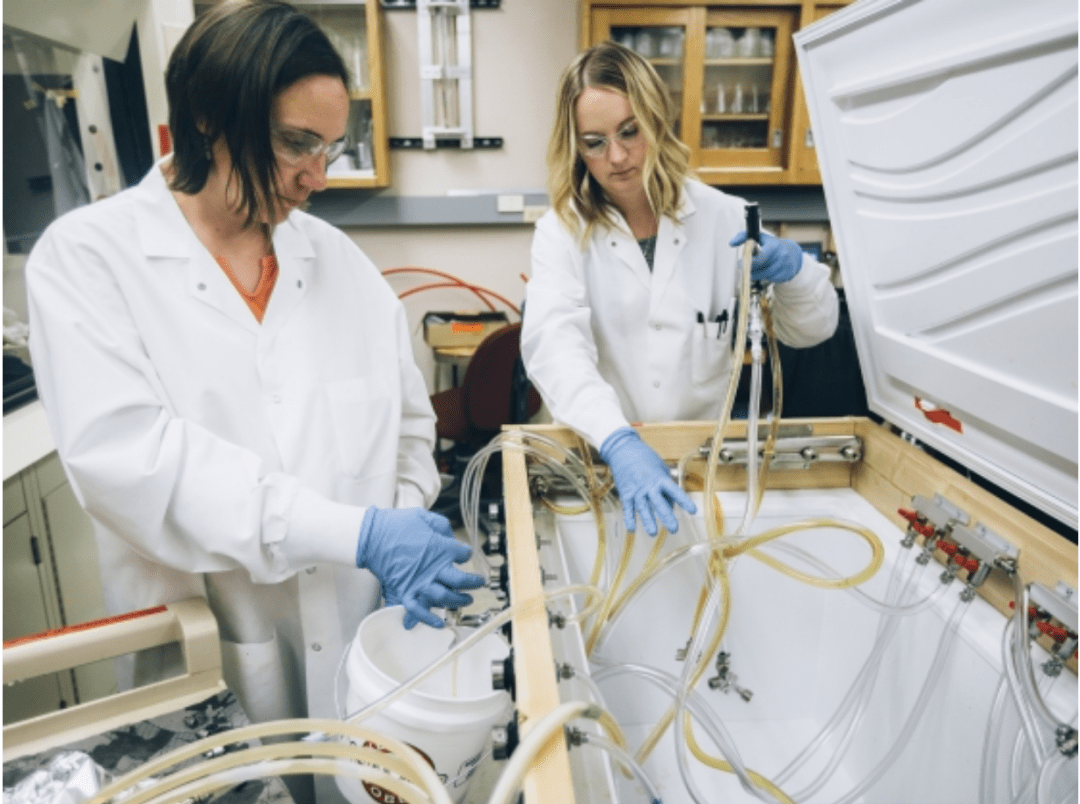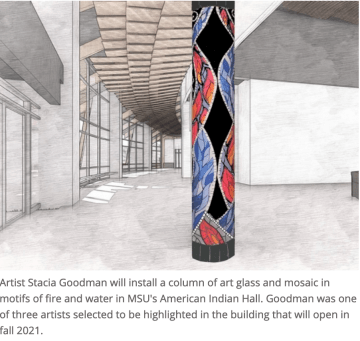MSU's Center for Biofilm Engineering celebrates 30 years of practical, interdisciplinary research

The microbial slime called biofilm causes hundreds of billions of dollars annually in metal corrosion to pipelines and other infrastructure. Biofilm in urinary catheters accounts for an estimated 30% of all hospital-related infections, resulting in as many as 13,000 deaths per year. Biofilm is a factor in outbreaks of foodborne E. coli, as well as a routine source of household frustration, clogging sink drains everywhere.
Yet until recently there wasn't much of a concept of — or even a name for — the diverse microbial communities that form on surfaces. People in industry called the stuff some variant of the word "gunk." And while microbiologists studied the organisms, they weren’t seen as fundamentally different from other microbes.
Three decades ago, when Montana State University applied for a National Science Foundation grant to start a biofilm-focused research center, "the scientific community hadn't really accepted biofilms yet — their existence let alone their importance," said Al Cunningham, professor in the Department of Civil Engineering in MSU's Norm Asbjornson College of Engineering. Applying for the prestigious grant was "a total long shot," he said.
But MSU had Bill Characklis, a charismatic engineer who had recognized the untapped possibilities of studying biofilm. And in 1990, MSU was selected as one of only three recipients nationwide for the more than $7 million grant — the largest MSU had ever received at that time.
According to Cunningham, who helped launch what would become known as MSU's Center for Biofilm Engineering, "(Characklis) basically brought together the small biofilm community, with industry, and said to NSF, 'This field has huge potential.' And time has proven that to be the case."
As the Center for Biofilm Engineering celebrates its 30th anniversary this year, MSU researchers say the center is thriving because it remains true to Characklis's vision of an interdisciplinary research community dedicated to solving real-world problems. The founding of the CBE in 1990 "was paradigm-changing," said Matthew Fields, the center's current director. "What it said was, 'Biofilms are unique, and they deserve their own field of study.'"
Thirty years ago, scientists tended to view bacteria primarily as organisms suspended in liquid. Even though bacterial slime clogged pipes, microbiologists’ traditional views didn’t include the idea that bacteria could actually attach to surfaces. Meanwhile, engineers designed things like pipes and had complex mathematics to explain fluid interaction with surfaces but seldom studied the microbes that interfered with their plans. Characklis saw the opportunity to mesh the two fields.
"Bringing in engineering as a way of looking at microbiology was pretty radical at the time," said Nick Zelver, an early Characklis collaborator and now the senior technology manager in MSU's Technology Transfer Office. "Engineering was required to understand what was happening. Why don't the bacteria just get washed off? These were hard problems that nobody really understood."
In an era when academic disciplines were more siloed than they are today, Characklis saw the need to bring together scientists from different disciplines. When Phil Stewart was recruited to the CBE in 1991, the open-endedness of the new biofilm field was exhilarating, he said. "There was a very creative, almost frontier, spirit," said Stewart, now a Regents Professor in the Department of Chemical and Biological Engineering.
Cancer claimed Chracklis's life in 1992 at age 50, but his interdisciplinary, practical approach to biofilm was already paying off. The MSU researchers, using fluid dynamics models, powerful microscopes and other advanced tools, were unravelling the fundamentals of how biofilms structured themselves into complex communities with properties beyond what the single-celled organisms could muster individually.
"We were constantly adapting and bringing in new ideas," said Stewart, who would go on to serve as the CBE's director from 2004 until 2015. "We were also realizing how widespread biofilms could be." Biofilm wasn't just gunk that clogged pipes, but invisibly thin layers of bacteria on medical equipment and countertops, festering wounds that didn't respond to antibiotics, and more.
Stewart published a groundbreaking paper in 1994 showing that bacteria on the surface of a biofilm could neutralize chlorine — the active ingredient in bleach — before the chemical could penetrate the microbial layers. The finding helped explain why biofilms appeared to resist traditional disinfectants and drew interest from companies focused on developing improved cleaning products for households and health care.
Support from a widening range of industries helped the CBE become self-sustaining as the original NSF grant ran its 11-year course. Today, the center's industrial associates program includes nearly 30 companies, including 3M, SC Johnson and Procter & Gamble. Interaction with industry, including at the annual biofilm meeting the CBE hosts each year, allows CBE scientists to share the latest in biofilm science while gaining ideas for new research that can solve problems.
"These problems have always been there, but now we have more of an ability to understand what's causing them," said Paul Sturman, the CBE's industrial program coordinator. "What we've seen is an increasing recognition that problems that were thought of as just bacteria problems are actually biofilm problems," he said.
Although much progress has been made in the past 30 years to study and treat biofilms, "there's still a lot we don't know," said microbiologist Fields, who became director in 2016. Scientists have a fairly good understanding of a handful of biofilms, but even with those, the closer researchers look, the more complexity they find.
That's why solutions to many of the CBE's earliest challenges have proven elusive. Biofilm corrosion of oil and gas pipelines, for example, remains a problem. Fields’ team was recently awarded a $6 million NSF grant to apply cutting-edge technologies — including gene sequencing, powerful imaging techniques and nanomaterials — toward developing coatings that could prevent biofilms from latching onto surfaces.
According to Cunningham, the growing recognition that biofilm can be understood in order to reduce its worst effects and even harness it for good is a tribute to Characklis's vision more than three decades ago. "It's a testimony to the staying power of the biofilm concept," he said. "And it's what has allowed the Center for Biofilm Engineering to continue and to flourish."










News Comments
Thank you
Open Auditions for Annie
Monday, Sep. 16, 2024
I’m at the Bozeman airport where your painting, “Blowing East” is displayed. It’s absolutely gorgeous! Bravo, Marci!!
The Artists’ Gallery in Bozeman’s Emerson Cultural Center May Exhibits
Sunday, Jun. 30, 2024
This is so typical of a sign in, which we should not have to do to check if we or some one in our party got a permit. I have been working or "creating an account" for 30 minutes and just get the same ...
Smith River permit drawing results available
Sunday, Mar. 10, 2024
I have struggled with this podcast and my own participation therein, the event itself obviously traumatic, but beyond that my inability to reach anyone and convey anything resembling truth. The person ...
Billings, MT Case Becomes True Crime Podcast | 'An Absurd Result'
Marktokarski
Saturday, Jan. 20, 2024